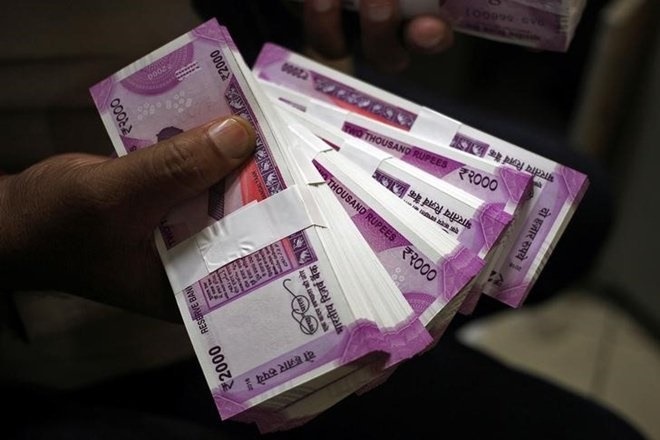By Satyendra Pandey
As the Yes Bank crisis, coupled with the coronavirus outbreak and the stock-market meltdown, ensues, Indian airlines are flying into a perfect storm. Fragile balance sheets, inadequate credit, and demand destruction will wreak havoc on the airline sector. Airline failures can’t be ruled out, and risk mitigation measures are few and far between. The industry is already grappling with excess capacity, and limited avenues to disperse it, or deploy it profitably.
Ironically, while crude is at historic lows, when viewed in conjunction with costs, capacity, and cash-flow, it is inconsequential. As it pertains to the airline sector, banks and the government may be facing their most complex liquidity challenge yet.
India’s airlines have witnessed varying degrees of profitability in the past five years. But, for sustainable success, they not only have to position themselves for success but also ensure they never run out of cash. Carrying excess cash is a luxury few airlines have. Thus, access to credit facilities is critical. But, in the current market, this is severely limited. The drivers: the NPA crisis, unstable EBITDAs, and lack of independent management control. Add to that the situation in the banking sector, the declining rupee leading to higher cash-outflows (most major capital costs for airlines are dollar denominated), and the collapse in revenue (very few are booking tickets in advance). It also doesn’t help that the Jet Airways shutdown continues to haunt bankers, with exposure of Rs 8,500 crore. Air India’s financial position is also fragile, propped up only by sovereign guarantees. In the industry as a whole, undercapitalisation is widespread.
Undercapitalised airlines pose a unique challenge. Cutting off credit to the airline means a significant impact to the “aviation economy.” Yet, bank lending, or sovereign guarantees to struggling airlines has an impact on the sector overall as pricing power, capacity utilisation, and borrowing rates of healthier airlines are affected. In the long run, lending to undercapitalised airlines leads to capital and employment loss, and limited recapitalisation.
Part of the challenge is the management airlines, with a focus on quarterly profit and loss, as opposed to the balance sheet. Indeed, combing through annual reports and analyst commentaries, there is little or no coverage of unencumbered assets, cash position, credit facilities, or any focus on strengthening the balance sheet (with one exception). Short management tenures, where managers are measured on quarterly performance, disincentivise this further.
Weak balance sheets are the norm for Indian airlines as of now. Tepid economic growth, coupled with the coronavirus impact, exacerbates the situation. Demand is declining each day. To understand the severity of this demand destruction, one need only look at the International Air Transport Association forecasts. These initially estimated the global airline industry would lose $30 bn for the year. This was revised to over $100 bn in less than a fortnight. Further revisions are expected.
For airlines, this translates to severely depleted cash-flows and a need to shore up liquidity. But, India’s airlines, with their asset-light business models, multiple liens on assets, irrational financing structures (such as first claim on cash-flow), unstable revenue streams, and declining liquidity on aircraft (impacting sale-and-leasebacks) are flying into a liquidity storm.
The current situation, and a constrained lending environment, leads to an interesting dilemma. Specifically, banks won’t approve loans to airlines on the basis of fundamental analysis. Yet, banks (especially those that already have exposure to airlines) will have the tendency to make bad loans. This, because recognising existing underperforming loans to airlines, and cutting off credit will increase chances of airline failure. As such, it means that the bank loses all capital on such loans. Recognising underperforming loans also means several questions on why these loans were extended in the first place. Banks may, hence, engage in lending to distressed airlines in the hope that they will get better, and repay the capital.
But, this contrarian lending—banks extending credit despite poor fundamentals—impacts the overall industry. Effectively, weaker airlines are extended credit at a lower cost of borrowing than that extended to stronger airlines. And, most of this capital is used to continue operations rather than propelling growth, with negative effects on employment, capital deployment, and improving the balance sheet. In a classic case of intent versus impact, distressed airlines are kept afloat while the industry suffers from diluted pricing power, reduced capacity utilisation, and distorted borrowing rates. Weak balance sheets—partly responsible for this fragile situation—become weaker, worseing the situation.
As for solutions, there are no simple ones. The government is working on an interim relief package, but structural reforms are crucial. Given their political and economic implications, however, the outlook for these reforms is fairly pessimistic. Chances are, the status quo will prevail.
The situation reminds one of controlled flight into terrain—an airworthy aircraft under pilot control being unintentionally flown into terrain. Ironically, here, the pilots are aware of the impending terrain and have ample inputs, but read the situation incorrectly, with negative consequences.
The writer is Former head of Ssrategy, Go Airlines (India). Views are personal


